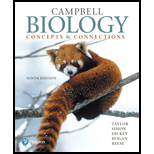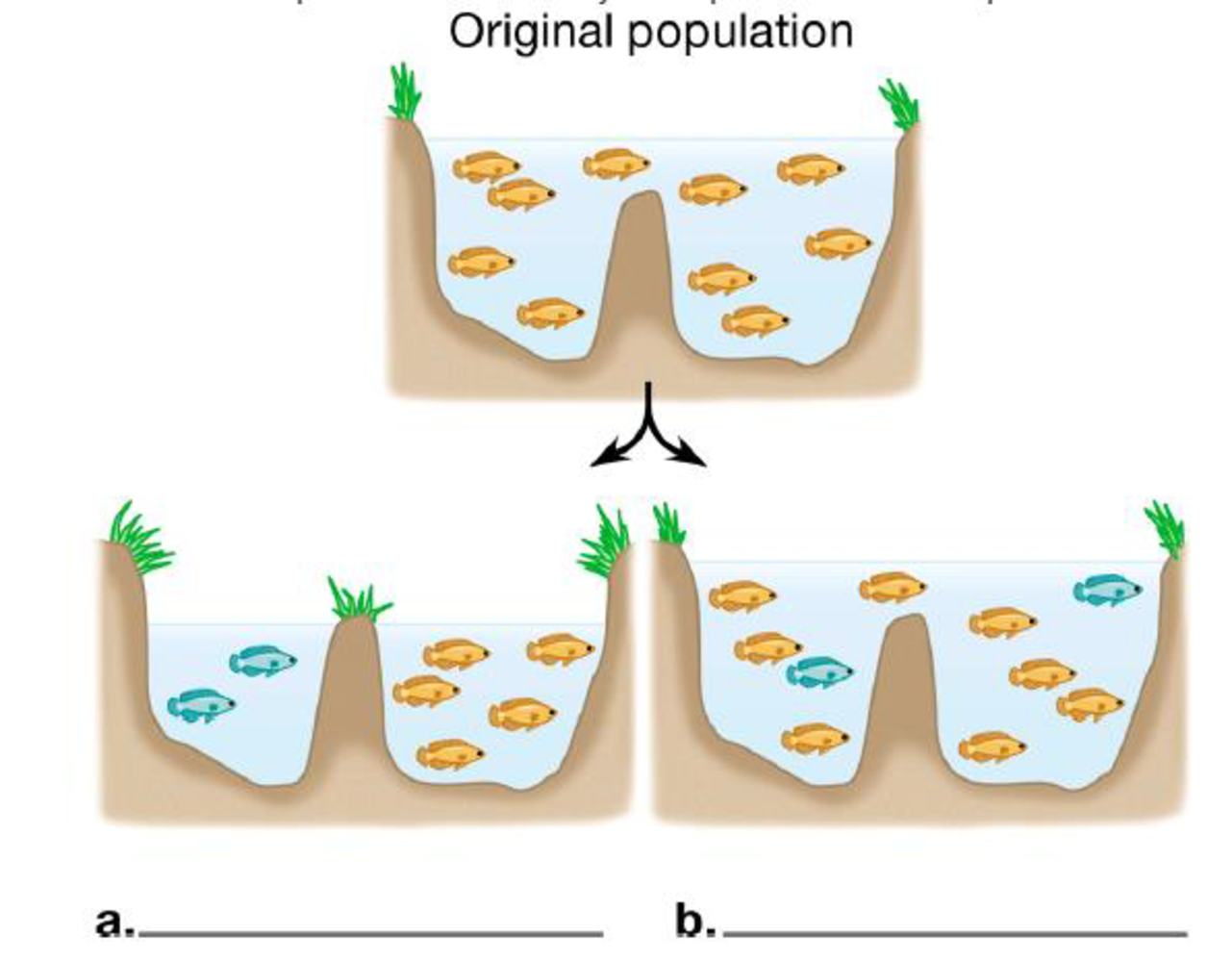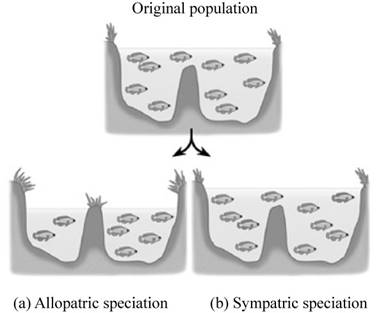
Concept explainers
Name the two types of

To name: Two types of speciation represented in the diagram and also to describe for each type in what way the reproductive barriers might have developed between the new species.
Concept introduction:
The speciation is an evolutionary process by which new species are formed. It can occur due to geographic, behavioral, anatomical and physiological factors.
The new species formed differ from their ancestors and cannot interbreed with their ancestral species to produce viable offspring.
Explanation of Solution
The type of speciation represented in the diagram (a) is allopatric speciation and in (b) is sympatric speciation.
The allopatric speciation occurs when two populations of a species are separated by a physical barrier such as a mountain or a hill. The gene flow between the two populations is stopped and over the time they become reproductively isolated due to natural selection, mutation or genetic drift.
In sympatric speciation, a new species arise from an ancestral species, while occupying the same geographical region. The two populations become reproductively isolated due to polyploidy, habitat differentiation and sexual selection.
Pictorial representation: Fig. 1 shows two types of speciation: (a) Allopatric speciation (b) Sympatric speciation.

Fig.1: (a) Allopatric speciation (b) Sympatric speciation.
Want to see more full solutions like this?
Chapter 14 Solutions
Campbell Biology: Concepts & Connections (9th Edition)
- Selection of Traits What adaptations do scavengers have for locating and feeding on prey? What adaptations do predators have for capturing and consuming prey?arrow_forwardCompetition Between Species What natural processes limit populations from growing too large? What are some resources organisms can compete over in their natural habitat?arrow_forwardSpecies Interactions Explain how predators, prey and scavengers interact. Explain whether predators and scavengers are necessary or beneficial for an ecosystem.arrow_forward
- magine that you are conducting research on fruit type and seed dispersal. You submitted a paper to a peer-reviewed journal that addresses the factors that impact fruit type and seed dispersal mechanisms in plants of Central America. The editor of the journal communicates that your paper may be published if you make ‘minor revisions’ to the document. Describe two characteristics that you would expect in seeds that are dispersed by the wind. Contrast this with what you would expect for seeds that are gathered, buried or eaten by animals, and explain why they are different. (Editor’s note: Providing this information in your discussion will help readers to consider the significance of the research).arrow_forwardWhat is the difference between Uniporters, Symporters and Antiporters? Which of these are examples of active transport?arrow_forwardWhat are coupled transporters?arrow_forward
- How do histamine and prostaglandins help in the mobilization of leukocytes to an injury site? What are chemotactic factors? How do they affect inflammation process?arrow_forwardCompare and contrast neutrophils and macrophages. Describe two ways they are different and two ways they are similar.arrow_forwardDescribe the effects of three cytokines (not involved in the initial inflammation response). What cells release them?arrow_forward
 Biology: The Dynamic Science (MindTap Course List)BiologyISBN:9781305389892Author:Peter J. Russell, Paul E. Hertz, Beverly McMillanPublisher:Cengage Learning
Biology: The Dynamic Science (MindTap Course List)BiologyISBN:9781305389892Author:Peter J. Russell, Paul E. Hertz, Beverly McMillanPublisher:Cengage Learning
